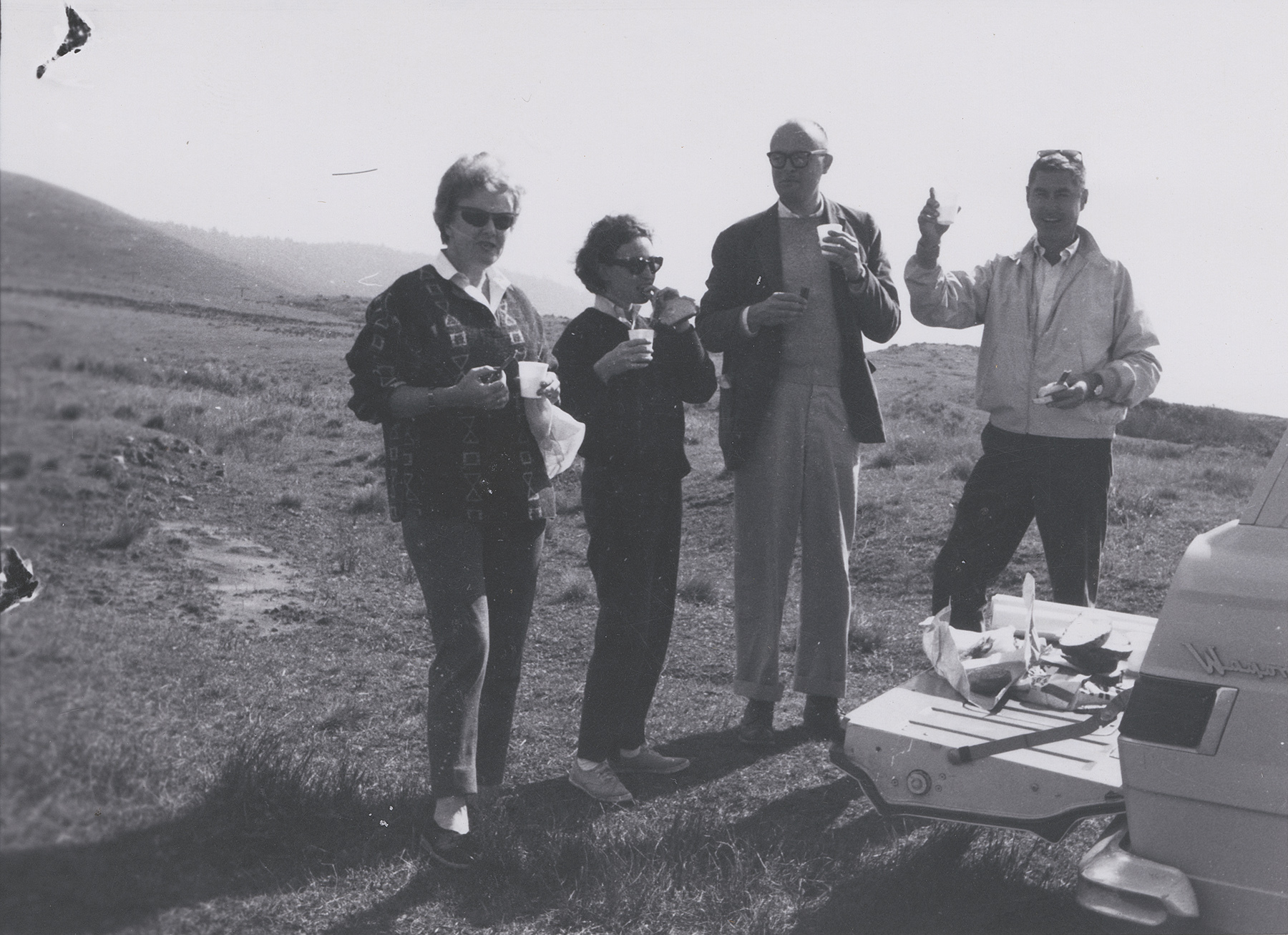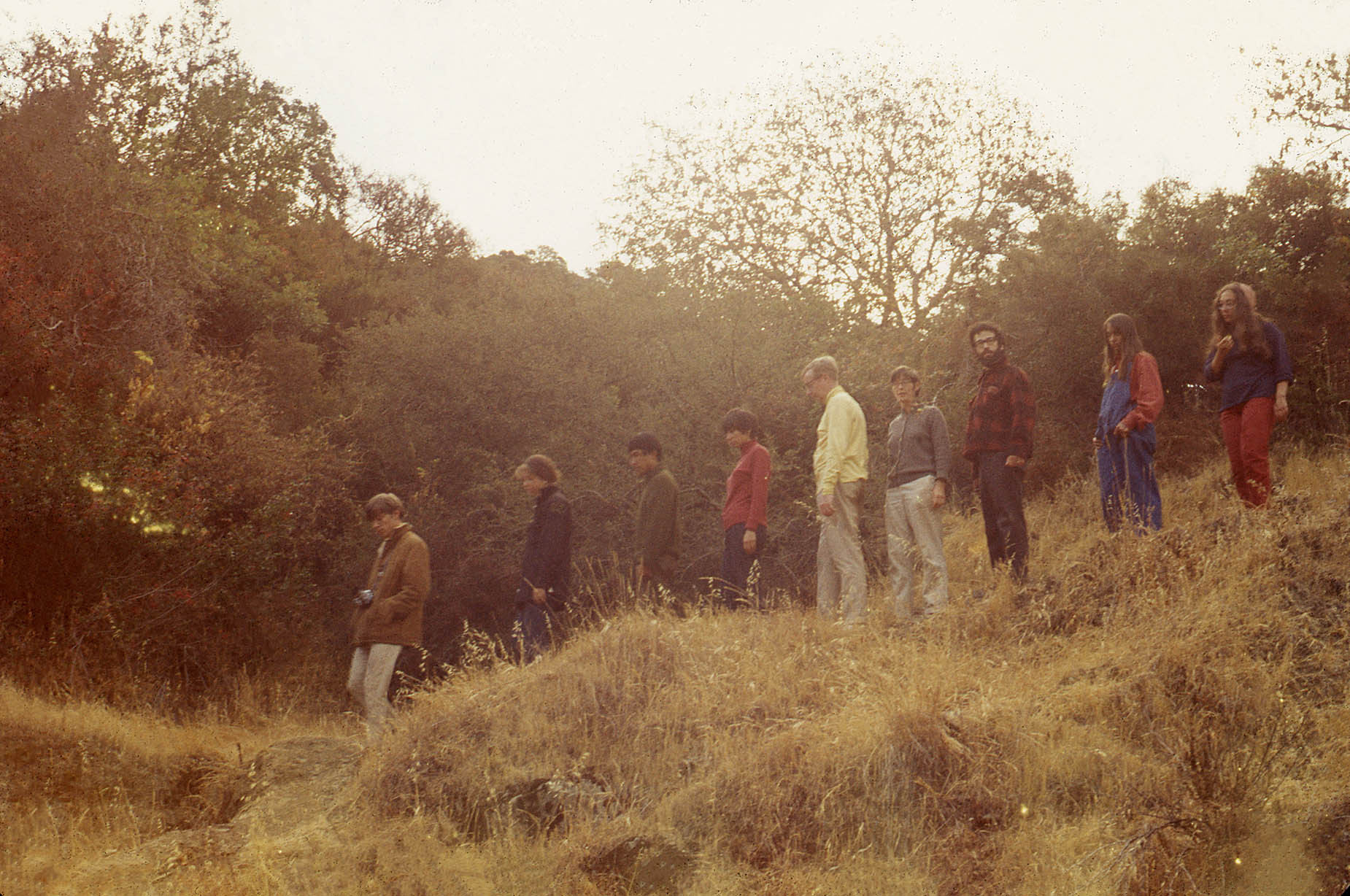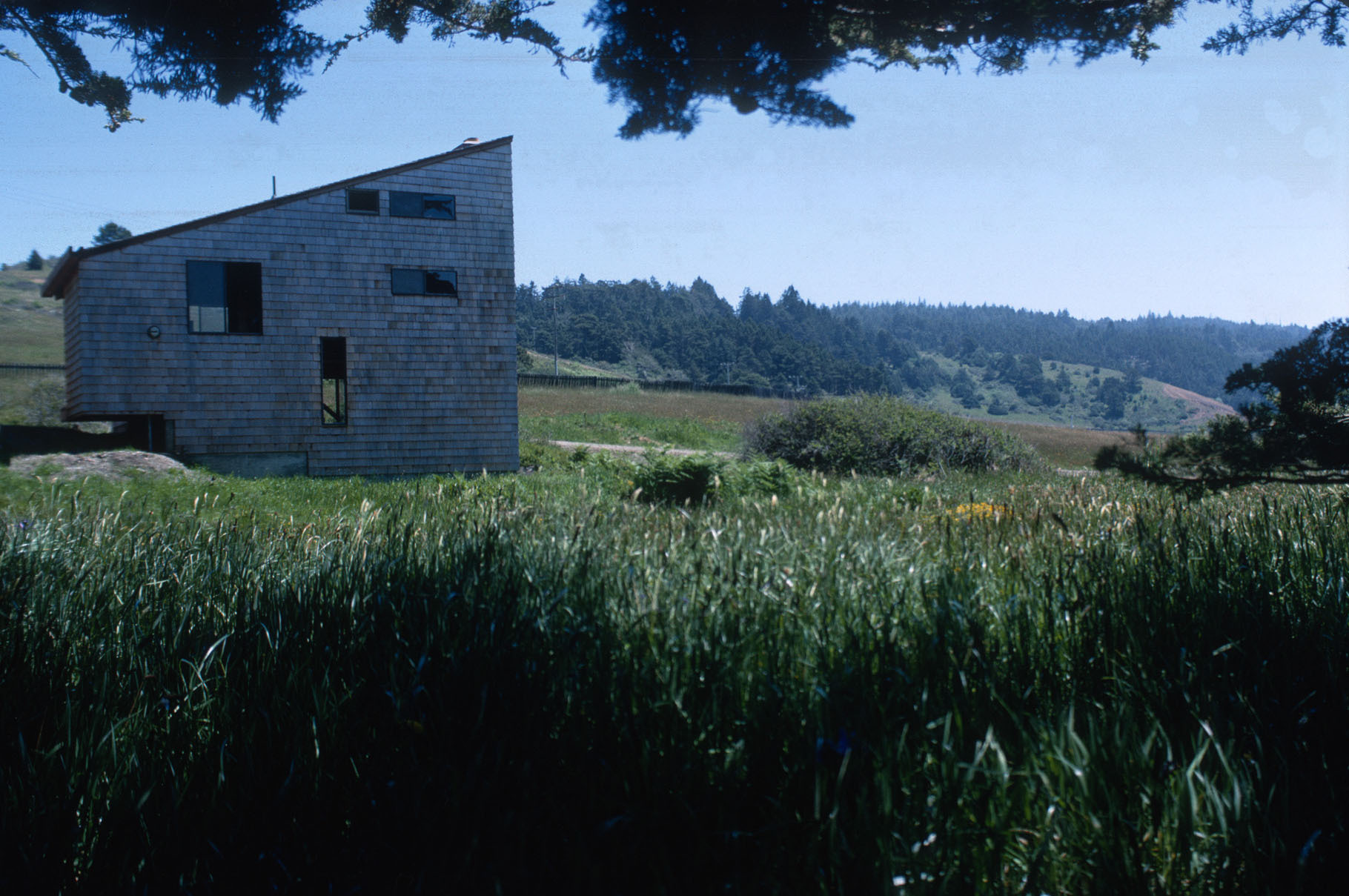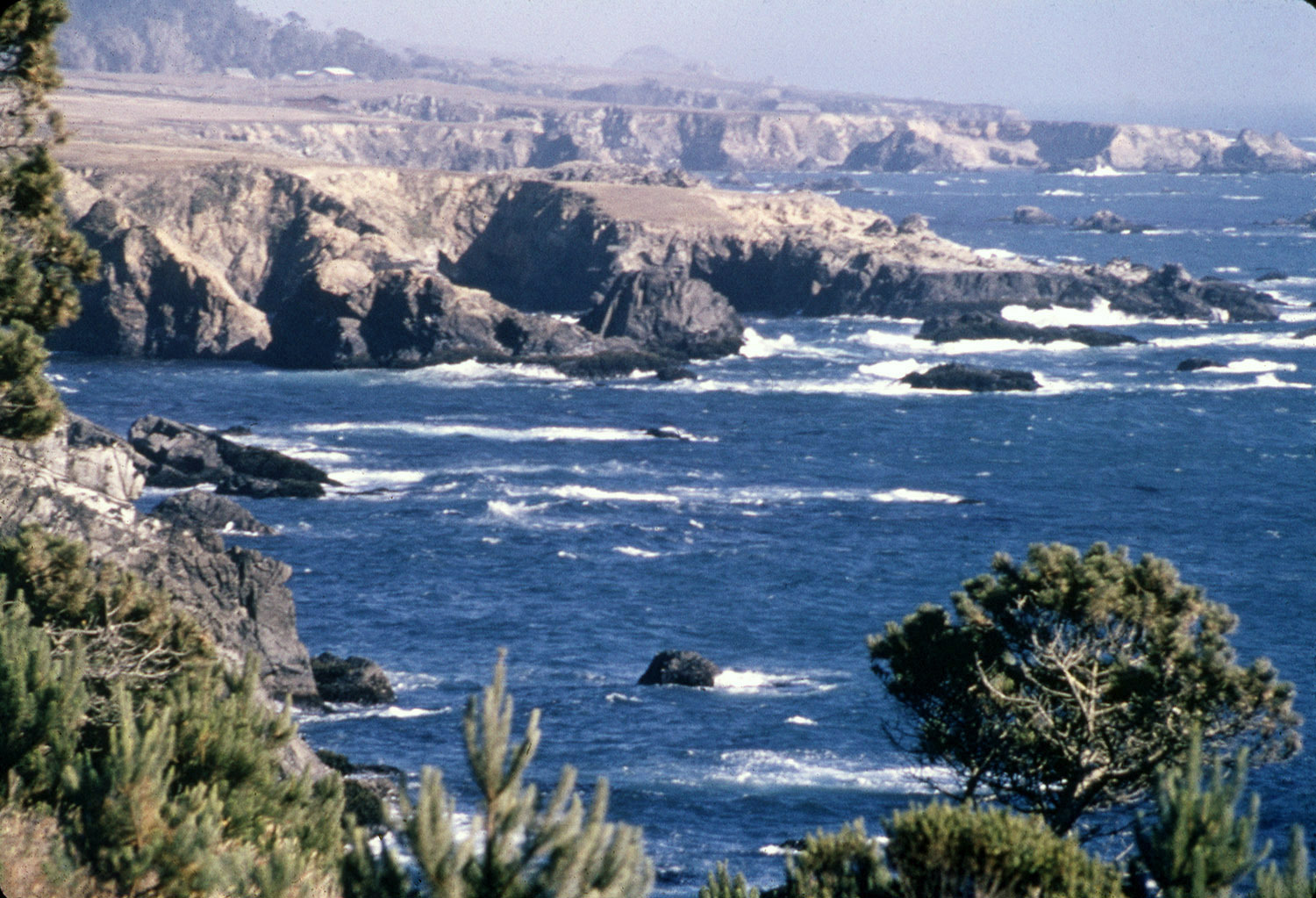Journey to The Sea Ranch
Journey to The Sea Ranch engages visitors with archival collections through a series of visually-rich stories, including a comprehensive timeline of the creative process and tours of the built environment. Brought together for the first time in digital format, these materials, including drawings, photographs, and manuscripts, animate the core principles and drives behind one of the most significant architectural and ecological planning projects of the twentieth century.
The Sea Ranch occupies ten miles along the scenic northern coast of California, about three and a half hours north of San Francisco. High bluffs, crashing waves and abundant wildlife populate the coastline. Above, the land opens out into vast meadows of tall grass and colorful wildflowers. Cypress hedgerows string out along the site, leading back to a dense forest. Amidst the natural beauty are clusters of buildings, weathered gray with sloping rooflines. These structures were built with the intention to live lightly on the land, to work with nature rather than against it, and to maintain the character of the natural surroundings with their color and texture.
The creative team behind this ambitious project included Oceanic Properties, led by Al Boeke; planners and landscape architects, principally Lawrence Halprin & Associates; architects including Joseph Esherick, Charles Moore, Donlyn Lyndon, William Turnbull, and Richard Whitaker; ecologists, including Dick Reynolds; graphic designer Barbara Stauffacher-Solomon; and a marketing team led by Marion Conrad.
Sea Ranch has become part of our cultural heritage. The buildings earned international recognition and significance soon after their completion and, almost sixty years later, continue to capture the imagination of architects, designers, and visitors alike. During a time of increased consciousness around issues of climate change and land stewardship, the theme of “living lightly on the land” continues to be relevant. The collections found at The University of California Berkeley and The University of Pennsylvania, a selection of which are seen here, contain important records of design history, intent, and change over time, that can be used to inform and inspire generations to come.







